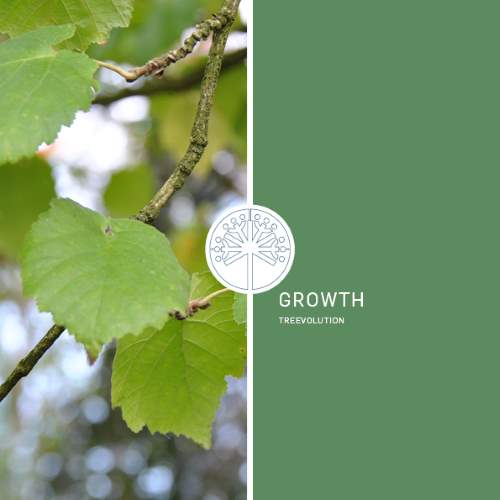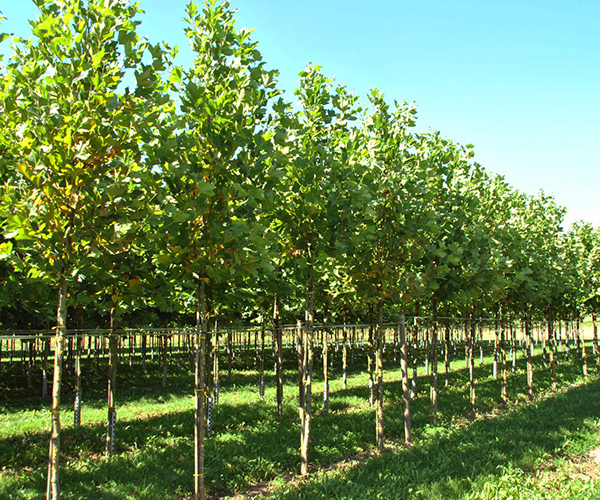

This Turkish hazel, which is striking thanks to its slender pyramidal crown shape, was discovered by Mr P.C.M. van den Berk growing in an existing group of trees in Schijndel. He immediately recognised that the crown shape would make it a good avenue tree. The mother tree was exchanged for another thick-stemmed Corylus colurna and planted at the nursery for propagation. Propagating the tree proved to be a challenge. Eventually, one propagator succeeded in grafting the tree. Since then it has been a regular part of the range offered by Van den Berk Nurseries.
Corylus colurna ‘VDB Obelisk’ is an excellent example of a climate-proof tree. This tree is very strong and drought-resistant, with little susceptibility to disease. It has few demands as to soil and can tolerate pavement too. Its regular columnar crown, which grows to a breadth of around 6 metres, also makes it suitable for narrower streets. The tree produces very little fruit, which means that it causes little nuisance to the surroundings. Its deep root system means that it is well anchored. The soft hairs on the leaf are effective in capturing particulate matter. All of these features make it an extremely good tree for urban environments.
In addition, this Turkish hazel is graceful. The trunk develops a rough, corky bark even at a young age. The branches too are covered with a soft, corky bark. The leaf is ovoid to ovate with a double serrated margin. The base of the leaf is conspicuously heart-shaped. The blossom is formed by male catkins that hang gracefully and by inconspicuous, purple-red female flowers. They become visible before winter.



Height: 10 – 12 m
Crown: columnar
Bark and branches: grey brown with cork
Leaf: wide ovate, base cordate, dark green, 8 - 12 cm
Flowers: catkins, yellow brown, up to 10 cm long, in Febr./March
Fruits: very few
Application: avenues and streets
Soil type: few requirements, preferably calcareous sandy soil
Wind resistance: very good
Winter hardiness zone: 5 (-28,8 to -23,4 °C)
Synonyms: Corylus colurna ‘Scholten’s Obelisk’